Reading view
Back Up Your Computers: A Critical Part of National Preparedness Month
Back Up Your Computers: A Critical Part of National Preparedness Month
As amateur radio operators, we’re always prepared for the unexpected—whether it’s a natural disaster, a power outage, family pets getting eaten, or an emergency communication scenario. This September, as we observe National Preparedness Month, it’s the perfect time to ensure that all aspects of our emergency readiness are covered. One often overlooked but vital aspect of preparedness is securing the data on our computers through regular backups.
Whether you’re logging contacts, managing digital modes, or maintaining software-defined radios, your computer is a critical part of your station. Losing data due to hardware failure, ransomware, or a natural disaster can set you back significantly. Here’s how you can make sure your valuable data is safe and sound.
Why Regular Backups Are Essential
- Protect Your Logs and Records: As radio enthusiasts, we accumulate a lot of data—contact logs, QSL card scans, configuration files for digital modes, software settings, and more. Losing these records can mean losing years of hard work.
- Preserve Software and Settings: Many of us use specialized software to run our radios and interfaces. Setting everything up again from scratch after a computer crash can be a time-consuming and frustrating experience.
- Guard Against Ransomware and Malware: Cyber threats are on the rise, and radio operators are not immune. Backing up your data can ensure you have a clean version to restore, even if you become a victim of ransomware or another attack.
- Plan for Natural Disasters: If your area is prone to flooding, hurricanes, or other disasters, having off-site or cloud backups can help ensure your data survives even if your equipment does not.
Types of Backups: Which One Is Right for You?
There are several types of backups you can consider, each with its own benefits:
- Local Backups: These involve copying data to an external hard drive or a network-attached storage (NAS) device. They are quick, reliable, and allow for rapid recovery, but they can be vulnerable to theft, damage, or the same disasters affecting your computer.
- Cloud Backups: Services like Google Drive, Dropbox, or dedicated backup services like Backblaze or Carbonite provide remote storage for your data. These backups are accessible from anywhere and are protected against local disasters, but they depend on a reliable internet connection and can come with ongoing subscription costs.
- Hybrid Approach: Combining local and cloud backups offers the best of both worlds. Local backups allow for quick recovery, while cloud backups provide an off-site option that ensures data safety even if your entire station is compromised.
How to Create a Backup Plan
- Identify Critical Data: Make a list of files and directories that are essential to your operations. This might include your logging software database, configuration files, QSL card images, and any custom scripts you’ve created.
- Choose a Backup Method: Decide whether a local, cloud, or hybrid approach works best for you. Consider your internet speed, the amount of data you need to back up, and your budget.
- Set a Schedule: Regularity is key to effective backups. Daily or weekly backups are ideal for most operators. Make sure you automate the process as much as possible to avoid human error or forgetfulness.
- Test Your Backups: A backup is only useful if it works! Periodically test your backups by restoring a file or directory to ensure everything is functioning as expected.
- Keep an Off-Site Copy: If you’re relying on local backups, consider keeping a copy off-site, perhaps at a friend’s house or in a safety deposit box, for added protection against physical damage or theft.
Practical Steps for Backing Up Your Data
- Use Backup Software: Windows and macOS both come with built-in backup tools (like Windows Backup and Time Machine). For Linux, tools like
rsynccan automate backups. - Automate the Process: Set your backup software to run automatically at regular intervals. This ensures you always have a recent backup without needing to remember to do it manually.
- Use Strong Encryption: If you’re storing sensitive data or using cloud storage, make sure your backups are encrypted to prevent unauthorized access.
- Check Your Backup Integrity: Regularly review your backup logs and run integrity checks to ensure your data is being backed up correctly.
- Keep Multiple Versions: If possible, keep multiple versions of your backups to protect against data corruption or accidental deletion. This can be particularly important if you need to restore a specific version of a file or recover from a mistake.
Conclusion
This National Preparedness Month, take the time to review your data backup strategy. Protecting your data is just as important as maintaining your radio equipment—especially in emergencies. By having a solid backup plan in place, you can ensure that no matter what happens, you’ll be back on the airwaves with minimal disruption.
Remember, being prepared means being ready for anything—don’t let a data loss incident catch you off guard!
This article was originally posted at Radio Artisan.
Long Duration M-Class Flare, and More (Livestream)
Long Duration M-Class Flare, and More (Livestream)
Livestream: Space WX, Propagation, Amateur Radio – Sundays
Vacuum Tubes – Electronics at Work: 1943 Educational Film
Livestream: Space WX, Propagation, Amateur Radio – Sundays
via Amateur Radio Daily: ARRL Board Establishes Information Technology Advisory Committee
 During its July meeting, the ARRL Board of Directors approved the formation of the ARRL...
During its July meeting, the ARRL Board of Directors approved the formation of the ARRL... Vacuum Tubes – Electronics at Work: 1943 Educational Film
Maximize Your XIEGU X6200: Get Firmware Update 1.0.1

Go Back In Time – Vintage Film
Go Back In Time – Vintage Film
QO-100 Satellite Ground Station Complete Build
I get quite a few emails from readers of my blog asking how my QO-100 satellite station is put together and so, I thought perhaps now is a good time to put together an article detailing the complete build.
My QO-100 satellite ground station is built around my little Icom IC-705 QRP transceiver, it’s a great little rig and is ideal for the purpose of driving a 2.4Ghz transverter/up-converter.
Of course all the software used for the project is Opensource and freely available on the internet.

The station comprises of the following building blocks:
- Icom IC-705 Transceiver
- DXPatrol 28/144/433Mhz to 2.4Ghz Up-Converter
- DXPatrol GPSDO Reference Oscillator
- DXPatrol 2.4Ghz 5/12w Amplifier
- Nolle Engineering 2.2 turn 2.4Ghz IceCone Helix Antenna
- 1.1m (110cm) Off-set Dish
- Bullseye 10Ghz LNB
- Bias-T to feed 12v to LNB
- NooElec SmartSDR Receiver
- PC Running Kubuntu Linux Operating System
- GQRX SDR Opensource Software
- Griffin Powermate USB VFO Knob
- QO-100 Ground Station Dashboard developed using Node-RED
- LMR400-UF/RG58 Coax Cable
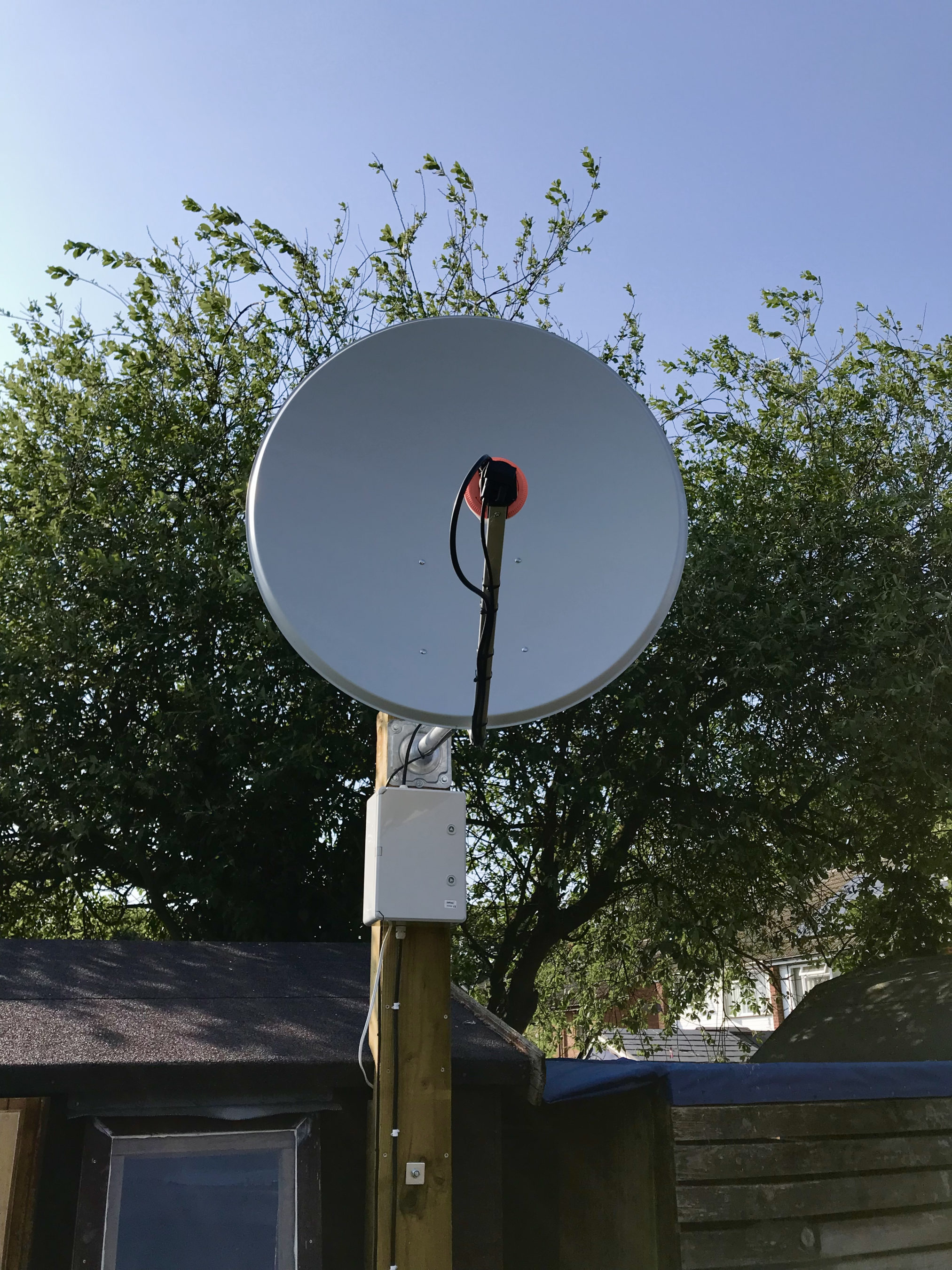
To get a good clear view of the QO-100 satellite I have the dish mount 3.2m above the ground. This keeps it well clear of anyone walking past in the garden and beams the signal up at an angle of 26.2 degrees keeping well clear of neighbouring gardens.
The waterproof enclosure below the dish houses all the 2.4Ghz equipment so that the distance between the feed point and the amplifier are kept to a minimum.
The DXPatrol amplifier is spec’d to run at 28v/12w or 12v/5w, I found that running it at 28v produced too much output for the satellite and would cause the LEILA alarm on the satellite to trip constantly. Running the amp at 12v with a maximum of 5w output (average 2.5-3.5w) is more than enough for me to have a 5/9+10 signal on the transponder.
The large 1.1m dish gives me quite an advantage on receive enabling me to hear the very weak stations with ease compared to other stations.
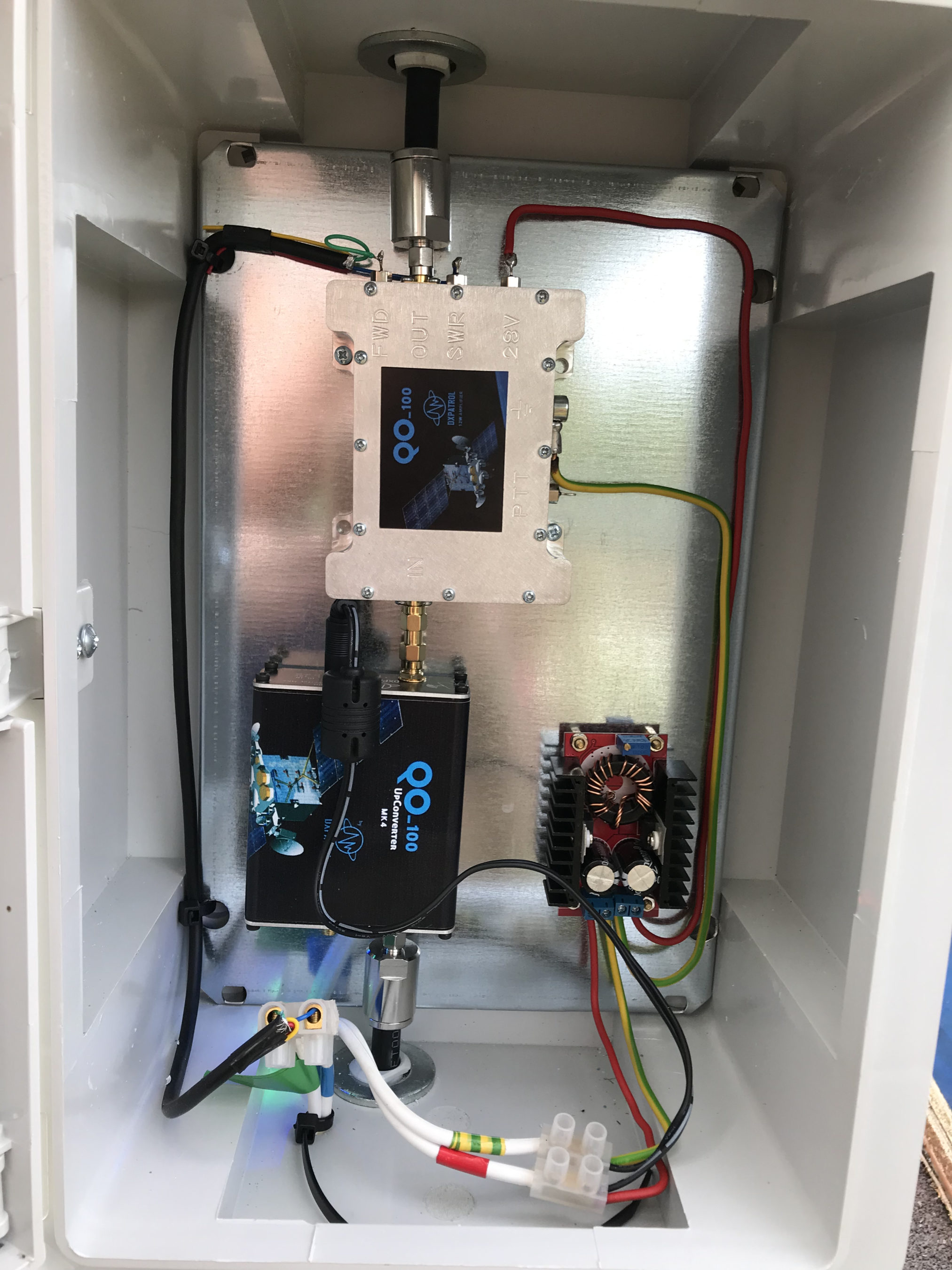
The photo above shows the 2.4Ghz equipment mounted in the waterproof enclosure below the dish. This photo was taken during the initial build phase before I rewired it so, the amplifier is shown connected to the 28v feed. To rewire the amp to 12v was just a matter of removing the 28v converter and connecting the amp directly to the 12v feed instead. This reduced the output from a maximum of 12w down to a maximum of 5w giving a much better (considerate) level on the satellite.
It’s important to keep all interconnects as short as possible as at 2.4Ghz it is very easy to build up a lot of loss between devices.
For the connection from the IC-705 to the 2.4Ghz Up-Converter I used a 7m run of
LMR-400 coax cable. The IC-705 is set to put out just 300mW on 144Mhz up to the 2.4Ghz converter and so it’s important to use a good quality coax cable.
Once again the output from the 2.4Ghz amplifier uses 1.5m of LMR-400-UF coax cable to feed up to the 2.2 turn Icecone Helix Antenna mounted on the dish. This keeps loss to a minimum and is well worth the investment.
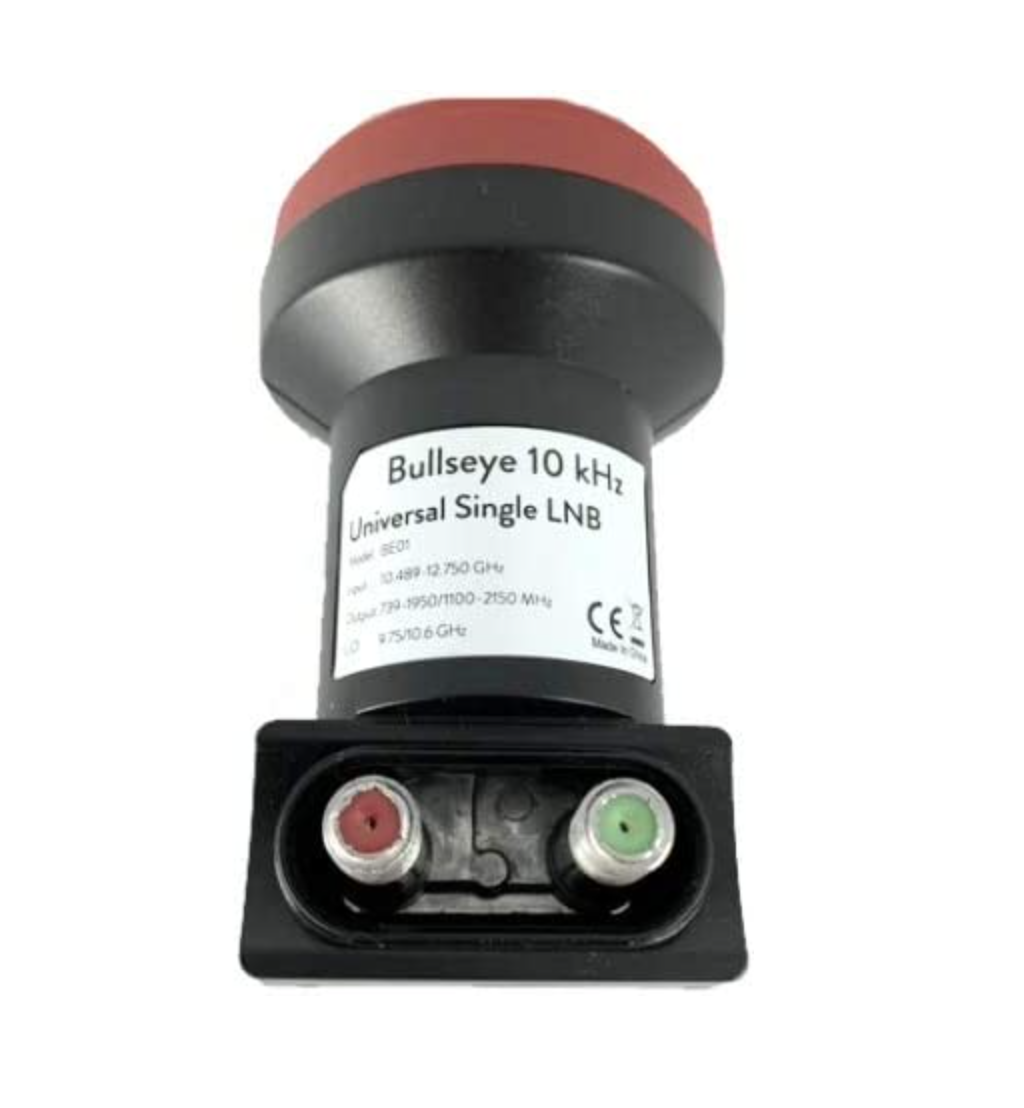
The receive path starts with a Bullseye LNB, this is a high gain LNB that is probably one of the best you could use for QO-100 operations. It’s fairly stable frequency wise but, does drift a little in the summer months with the high temperature changes but, overall it really is a very good LNB.
The 12v feed to the LNB is via the coax and is injected by the Bias-T device that is in the radio shack. This 12v feed powers the LNA and associated electronics in the LNB to provide a gain of 50-60dB.
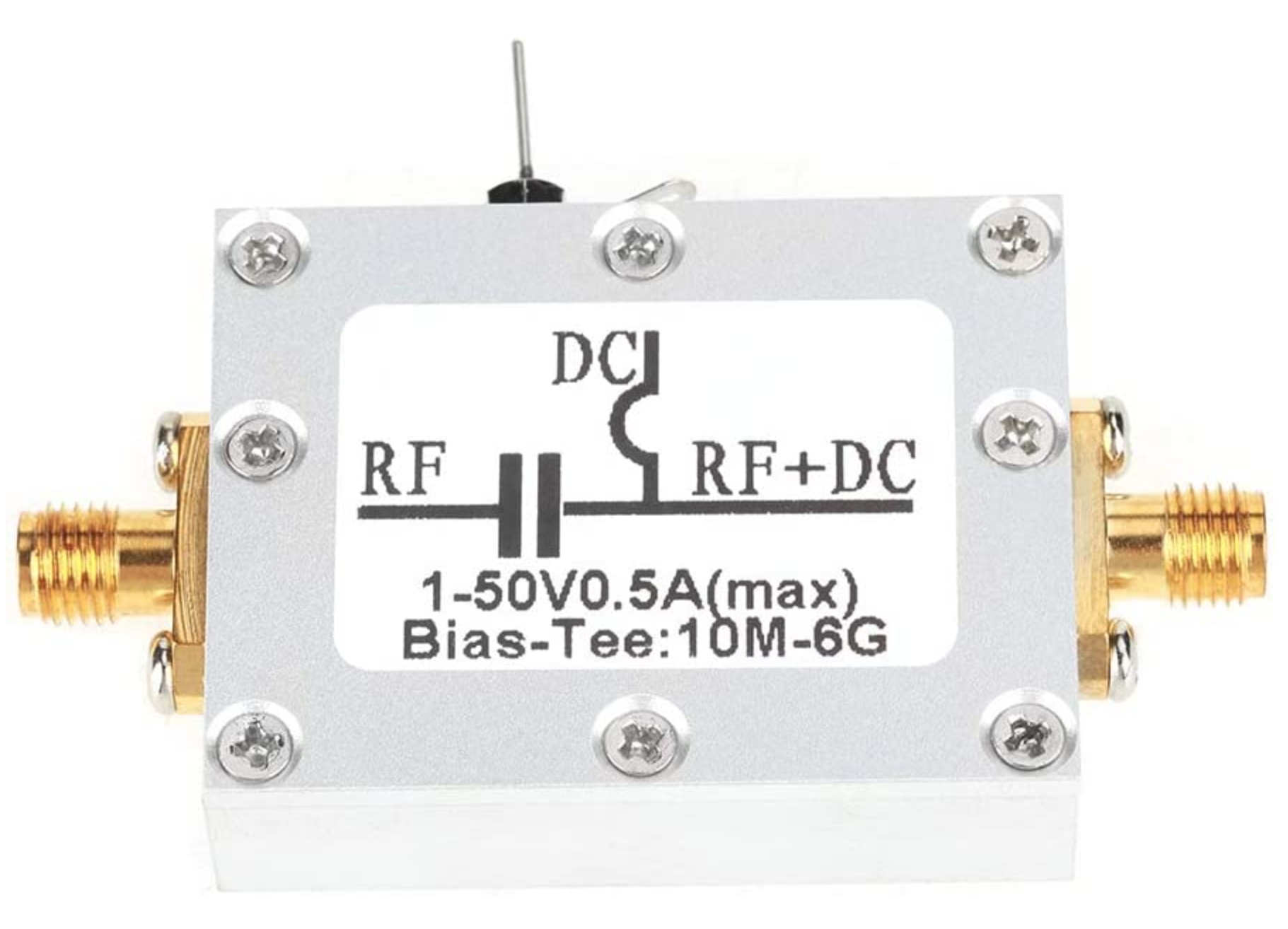
From the Bias-T the coax comes down to the NooElec SmartSDR receiver. This is a really cheap SDR device (<£35 on Amazon) based on the RTL-SDR device but, it works incredibly well. I originally used a Funcube Dongle Pro+ for the receive side however, it really didn’t handle large signals very well and there was a lot of signal ghosting so, I swapped it out for the NooElec SDR and haven’t looked back since.
The NooElec SmartSDR is controlled via the excellent Opensource software GQRX SDR. I’ve been using GQRX SDR for some years now and it’s proven itself to be extremely stable and reliable with support for a good number of SDR devices.
To enhance the operation of the SDR device I have added a Griffin Powermate VFO knob to the build. This is an old USB device that I originally purchased to control my Flex3000 transceiver but, since I sold that many moons ago I decided to use it as a VFO knob in my QO-100 ground station. Details on how I got it working with the station are detailed in this blog article.
Having the need for full duplex operation on the satellite this complicates things when it comes to VFO tracking and general control of the two radios involved in the solution and so I set about creating a QO-100 Dashboard using the great Node-RED graphical programming environment to create a web app that simplifies the management of the entire setup.
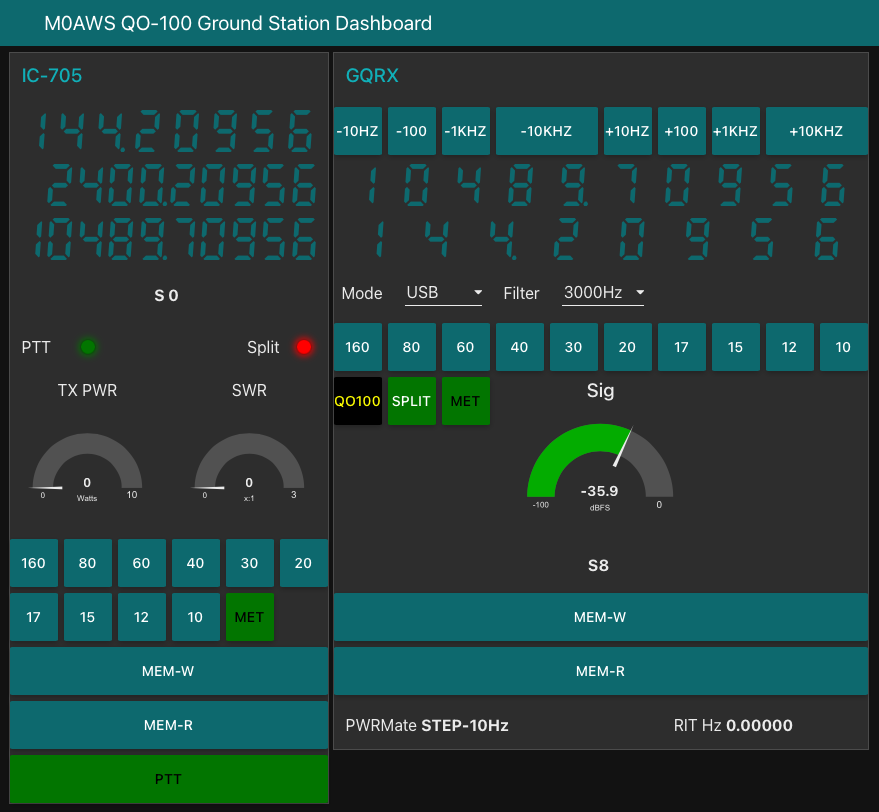
The QO-100 Dashboard synchronises the transmit and receive VFO’s, enables split operation so that you can transmit and receive on different frequencies at the same time and a whole host of other things using very little code. Most of the functionality is created using standard Node-RED nodes. More info on Node-RED can be found on the Opensource.radio Wiki or from the menu’s above.
I’ll be publishing an article all about the QO-100 Dashboard in the very near future along with a downloadable flow file.
I’m extremely pleased with how well the ground station works and have had well in excess of 500 QSO’s on the QO-100 satellite over the last last year.
More soon …
